Twilight: 2000‘s Polish Campaign: Part III
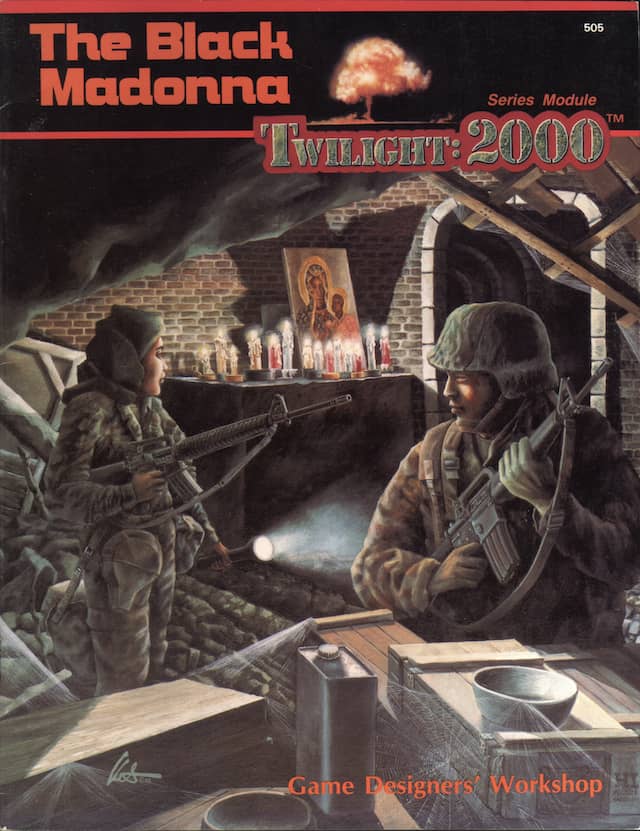
This is Part III of a detailed review of The Polish Campaign, a 6-part adventure sequence published by GDW in 1985 for their Twilight 2000 role playing game. The campaign covers Escape from Kalisz, The Free City of Krakow, Pirates of the Vistula, The Ruins of Warsaw, The Black Madonna, and Going Home. Part I, which looks at The Free City of Krakow and touches upon Escape from Kalisz, is here. Part II, which looks at Pirates of the Vistula and The Ruins of Warsaw, is here.
Twilight: 2000’s Polish campaign is iconic in the world of RPGs for providing supplements and adventures that fit its sandbox emphasis. Many RPGs rely on set adventures with expected scenes and outcomes, and many game masters (GMs) use those preset stories. While this is all well and good (nothing wrong with it), most GM plans do not survive contact with the players.
Sandbox games flip the script. What do the players want to do? The GM then reacts to this, often relying on random encounter tables. However, pure sandbox play can pose problems around ongoing interest. Humans like stories because they have beginnings, middles, and endings. The Polish campaign proved extraordinarily successful at negotiating the balance. The books are not pure adventure nor pure sourcebook.
The Black Madonna is, perhaps, the most famous supplement. So popular is it that Free League added a revision by the original author, Frank Frey, as a Kickstarter digital stretch goal for their forthcoming edition of Twilight: 2000. It is interestingly within the campaign the one that seems “out of sequence.” The previous supplements, Pirates of the Vistula and The Ruins of Warsaw, provided numerous incentives to the players to make their way from Krakow to Warsaw. The Black Madonna’s primary area of operations is northwest of Krakow and in Silesia.
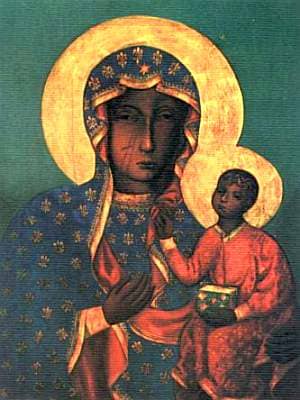
The premise is simple: The players stumble across the body of an American soldier. Among the findings is a journal the soldier kept that describes finding the entrance to a cave, a painting known as The Black Madonna, and the subsequent death or disappearance of the squad. The soldier cut himself severely in his escape and has died due to infection. The Black Madonna is a religious icon of the Virgin Mary venerated by the Polish Catholic community and seen as a symbol of Polish independence and resilience. The supplement provides capsule history of the icon and its importance to Poland. In Twilight: 2000, the icon is believed destroyed in the nuclear strikes on Częstochowa, where the church it was held at was.
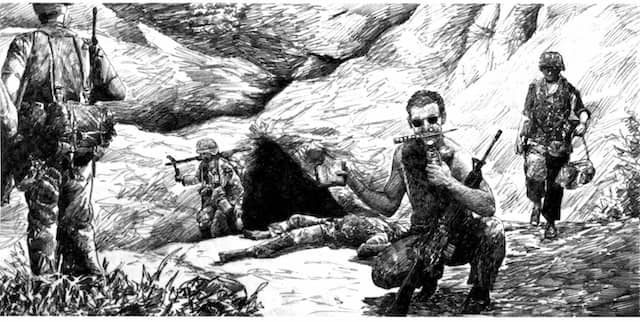
Rumors, however, have begun to reach the larger populace that perhaps the icon survived, and warlords and leaders in the area are very interested in securing it to help solidify their position in Poland as the leader. As usual for the Polish campaign, the set up is all that is provided. What happens now is up to the players. They may not recognize the description as The Black Madonna, but the soldier’s journal describes enough of the findings that either the lure of riches is enough to draw the players in or the information itself is valuable. If they know what The Black Madonnais, they may be more enticed to get it for themselves.
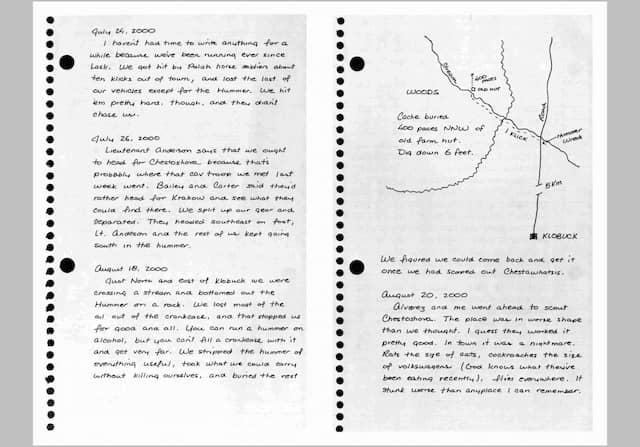
Much of the rest of the book provides the array of forces in Silesia that the players could encounter and dozens of NPCs. The most important of these is the Markiz of Silesia, named Julian Filipowicz. Leader of the Polish 14th Motorized Rifle Division, he eventually ignored orders and with the aid of a DIA agent, Dan Brennan. The Markiz is an interesting parallel to Baron Czarny, encountered in Pirates of the Vistula and The Ruins of Warsaw. The Markiz, while far from a democrat, is a ruler with more of the peoples’ wellbeing at heart than the purely power-hungry Baron. The Markiz has set up a small feudal state in Silesia and is intent on increasing his influence and control — and he sees The Black Madonna as an important part in establishing his primacy and legitimacy.
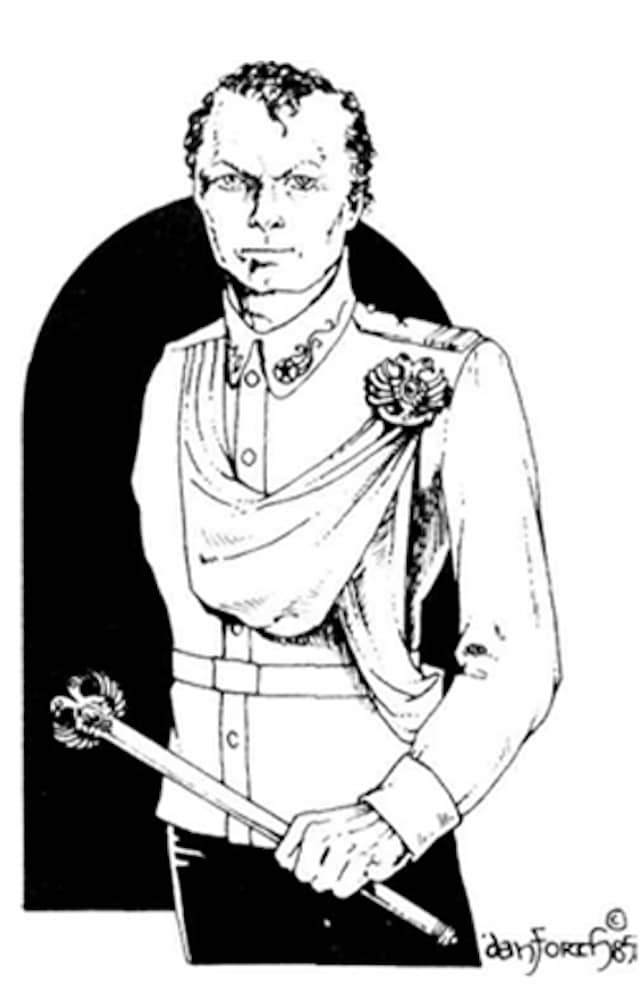
While outwardly more beneficent, the Markiz is, in fact, paranoid that people are wanting to eliminate him. He trusts no one and has informers throughout his domain. At the same time, he rewards loyalty and good work. The Markiz can be a lot of fun for the GM to play — the outward good governor bringing order to the chaos of a devastated countryside — and the ambitious, paranoid ruler concerned that everyone is intent on double-crossing him. The book describes it as:
It would be easy enough to play the Markiz as some sort of stereotypical fascist maniac. This would be a great injustice to both the players and the Markiz. Filipowicz is a complex person, with many conflicting currents to his character. Referees should play him as such.
The supplement also provides profiles on the Markiz’s wife, his primary leaders, GRU agents, and a Czech Army general with not dissimilar plans to the Markiz — though he lacks the persona and capabilities of the Markiz. Numerous towns and factions are documented, along with updated rumor tables appropriate for the area. Additionally, the DIA and others have been working to obtain The Black Madonna. The DIA in fact sent a military team under the leadership of Captain Molly Warren. Her mission was supplementary to Operation Reset (as described in earlier parts of the Polish campaign), but it too stalled when the US 5th Mechanized was smashed by the Soviet army. The KGB and GRU have an interest in The Black Madonna as well but are violently — often literally — opposed to each other.
For those players who seek to obtain The Black Madonna to bargain with, the ruins of Jasna Gora in Częstochowa in tons of detail. The background for The Black Madonna’s current state and location provide yet more fodder for the GM.
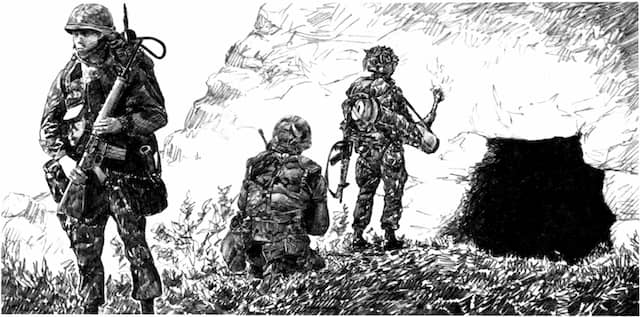
All of this adds up to The Black Madonna being the ultimate sandbox supplement. An encounter that can follow up in any number of different ways. Threaded throughout are competing factions, interesting characters, and numerous minor encounters that can lead up to something major. It is in the hands of the players.
As a contrast, Going Home is the culmination of the presumed goal of the players: getting out of war-devastated Europe back to chaotic America. This is not a requirement of the supplement, but it underlies the themes. Supreme Allied Command in Europe has decided to send America personnel home. They are gathering a motley fleet to transport the soldiers. For German assistance in this, the German military gets to keep all American vehicles and artillery. Space on the home bound fleet is so limited, in fact, that soldiers will be a.lowed only a limited carrying capacity. This is a clever method of stripping players of a lot of their loot and essentially resetting them for landing and campaigning in America.
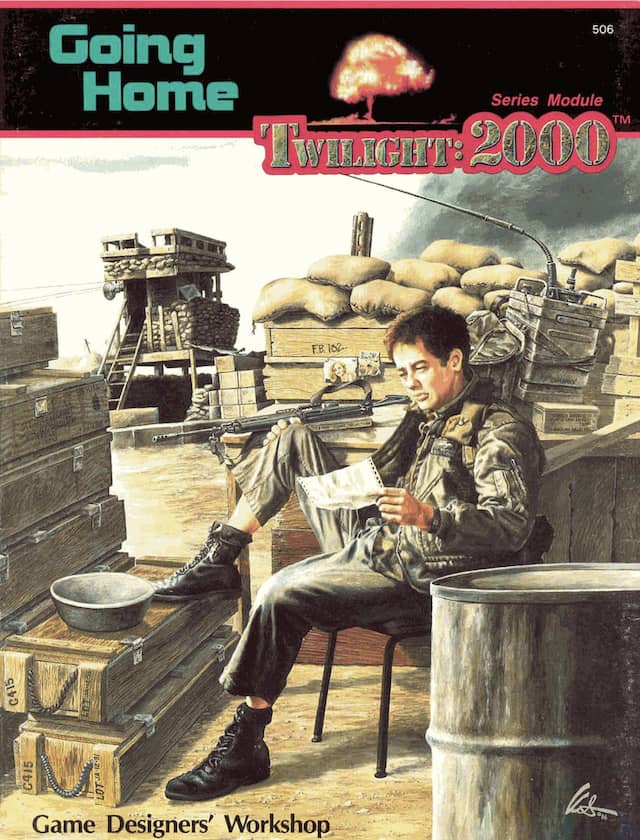
The orders are broadcast out, and the GM makes sure the players hear of it. The orders come with a deadline: the fleet will leave the German port of Bremerhaven with whomever shows up. If the players do not make it, the players will be abandoned in Europe. Presuming the players want to leave, the question is how do they get there. The supplement provides a working train scenario. As part of a chance encounter with a Captain Martens, the players are offered a ride on a train he has converted to steam power if they provide muscle — both in shoveling coal and in protection. Of course, the players can find other ways to Bremerhaven. The helicopter from The Free City of Krakowmay be an option. The boats from Pirates of the Vistula is another option. Or the players could trek it overland. Regardless, the options offer a variety of pros and cons. Limited fuel for the helicopter (or even having a pilot). Slow travel overland with all its inherent dangers. The water route is long and not straightforward.
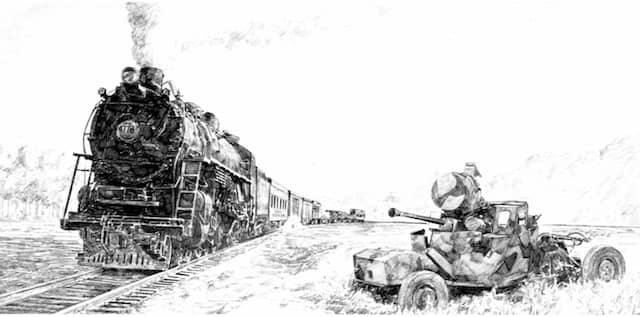
Unlike other supplements, this one is less focused on factions — though many are listed. Rather, this is about the journey. Numerous locations are listed and provided, several with intriguing tidbits.
This about Bremer:
A minor mystery concerns what has become of the old three-masted sailing ship, the Deutschland. A training vessel for the naval school and great tourist attraction before the war, the ship vanished before the port was bombed. It is rumored that the city authorities sent it somewhere to safety, but no one who knows its location survived the attacks on the city.
Or this if players venture into the so-called Dead Zone — French occupied territory west of the Rhine:
Players who choose to venture into the dead zone will notice that Belgian troops are now serving in the French army, indicating that Belgium has been absorbed into the French Union. Also, Senegalese troops will occasionally be spotted, indicating that Senegal is back under French control. What this indicates about events in Africa is open to speculation.
As a GM, I have always been fond of these one-line hooks that open up possible adventures or even campaigns. And this supplement provides many of these.
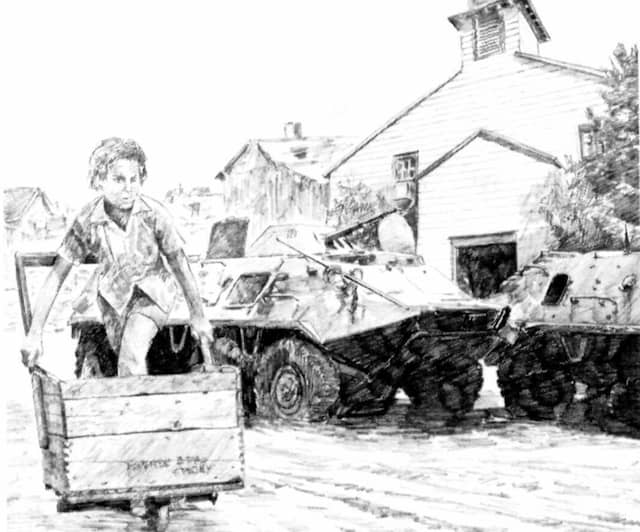
What if the players do not want to go home? This supplement provides lots of details on towns and locations in Germany that can serve the GM. The supplement also has a section devoted to “Missing the Boat.” They recommend a number of options, including having one of the boats have engine trouble that delayed its departure to remain in Europe or attempt to link up with other American forces in the Balkans or southwest Asia.
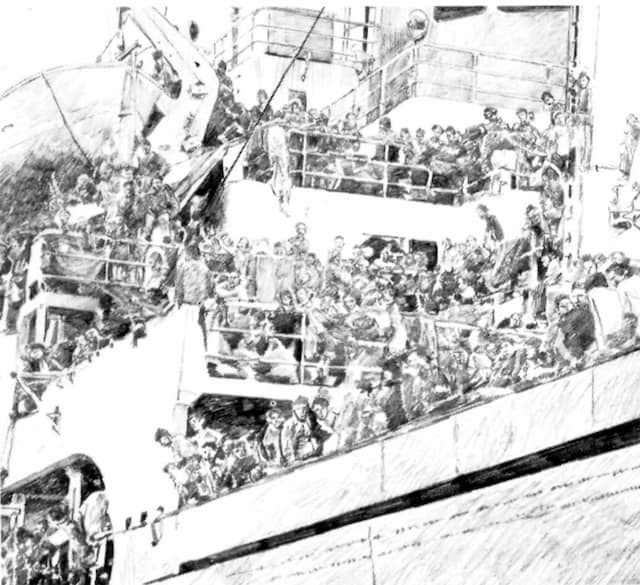
Rules for operating the train are provided and numerous pages detail French vehicles, equipment, and forces.
Despite its presumed ending, Going Home still preserves the essence of the sandbox game by giving the players complete control over their fate. They could reject outright the notion (or as in my campaign, my brother plays a team of spetsnaz who have varied interests — including their own version of going home. It is a satisfying conclusion to the campaign, despite coming after the masterful The Black Madonna.
The overall Polish campaign is an astonishing achievement in sandbox game design. Memorable NPCs, enticing adventures, but nothing predetermined. For any players coming from more “traditional” adventures, those that make up the Polish campaign may appear slim on plot. That’s okay. That’s the point. It is full of opportunity and hooks and freedom. And it is marvelous.
Our previous coverage of GDW’s Twilight: 2000 includes:
Exploring Post-Apocalyptic Poland in Twilight: 2000
Twilight: 2000 — Roleplaying in a Post-Nuclear Holocaust World
Twilight: 2000‘s Polish Campaign, Part II
Twilight: 2000‘s Polish Campaign, Part II
Twilight: 2000‘s Polish Campaign: Part III
Going Home Isn’t All it’s Cracked Up to Be: Twilight: 2000’s American Campaign, Part I
From the Mountains to the Oceans: Twilight 2000‘s American Campaign, Part II
Reckoning: Twilight: 2000‘s American Campaign, Part III
Patrick Kanouse encountered Traveller and Star Frontiers in the early 1980s, which he then subjected his brother to many games of. Outside of RPGs, he is a fiction writer, avid tabletop roleplaying game master, and new convert to war gaming. His last post for Black Gate was Twilight: 2000’s Polish Campaign: Part II. You can follow him and his brother at Two Brothers Gaming as they play any number of RPGs. Twitter: @twobrothersgam8. Facebook: Two Brothers Gaming and Solo Twilight: 2000 game.
Very good presentation. The Polish Campaign modules always had a soft space in my heart. I am currently beginning the Free City of Krakow and looking forward to playing them (again).
Tim, thanks for reading! I was always fond of them from years ago. Re-reading them recently has really made me realize how fantastic they are. I’ll be using the information in my campaign with my brother–but he’s playing some spetsnaz–so the other side.
I’ve commented before that these sandboxes were my “level up” in learning to GM. I’ve started the southern two at least 4 times as campaigns.
Black Madonna and Krakow were great as sandboxes in that they each present a McGuffin that the PCs cannot use, and then introduces several factions that can use Reset or the icon.
I found the challenge of playing the Markiz too difficult for me, but my groups often skated by Silesia anyway.
An unfulfilled wish of mine is that there could have been a next stage of the game, one in which rules were presented for players to build their own power base– farming, defenses, training, etc.– similar to the domain-building of “name-level” characters in older D&D. I hear rules like this may be a stretch goal in the Free League rules.
A related wish is to have a political/war game of “who wins in Poland after 2000”– the Markgraf/King, the general in Krakow, the Black Baron of Warsaw, the Soviets or Lublin, the Polish Free Congress? Black Madonna and its sequel White Eagle seed the idea with the possibility of wars between the King and Krakow or the People’s Army, as do Ruins of- and Return to Warsaw.
Lee, thanks for reading! I’ve learned so much about GMing since those early Twilight: 2000 days. I’m now better at managing factions and their operations when not in view of the players, which I’m incorporating into my current Twilight: 2000 campaign. I think the extensions you mention are fantastic.
You are correct, the base-building rules are an unlocked stretch goal with the Free League rules. YEAH!
The Polish Campaign was the only Twilight 2000 campaign we played. In our House rules our party was made up of remnants of the 4th Canadian mechanized Brigade Group.
We later adapted it for a Traveller Mercenary Campaign.
David, thanks for reading! That’s awesome!